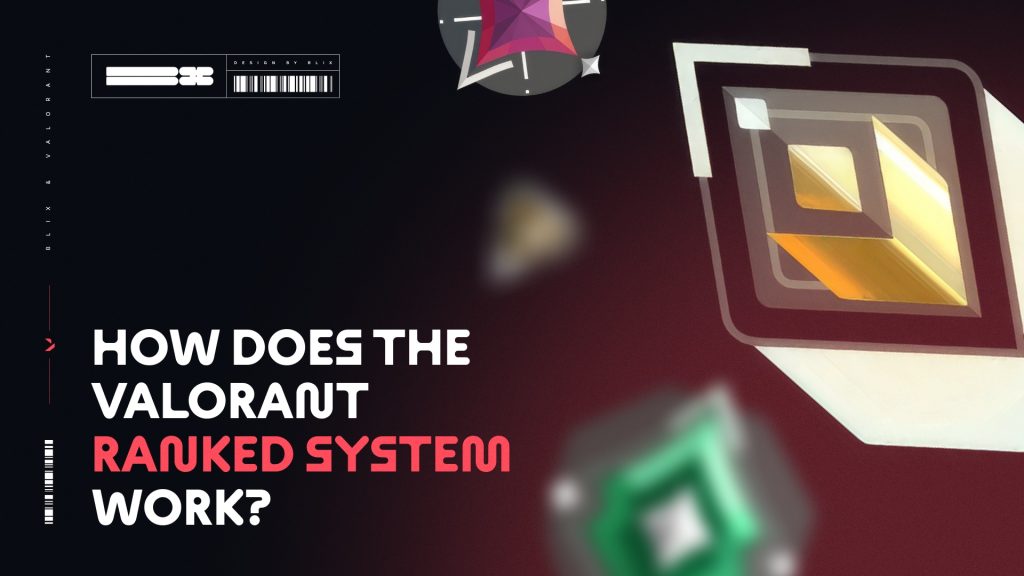Every competitive game has a ranked system, and Valorant is no different. The rank system usually determines your skill at that game, while the rank system may initially seem slightly intimidating. But don’t worry! This guide breaks it down to help you understand how it works and what you need to know to climb the ranks.
In a Reddit post, players discussed the Valorant rank system and how Riot Games uses a system called MMR to match the same skilled level player with each other.
Contents
How Ranks Work
Valorant Rank System
Valorant has a range of ranks that show your skill level. Here are the foremost ranks, from lowest to highest:
- Iron
- Bronze
- Silver
- Gold
- Platinum
- Diamond
- Ascendant
- Immortal
- Radiant
Valorant has nine different ranks, from the lowest Iron to the highest, which is Radiant. Each rank has three divisions: Iron1, Iron2, and Iron3. If you were to rank up, you would not go to the next rank unless you surpassed those three divisions first.
Unlocking Ranked Mode
If it is your first time playing Valorant, to unlock ranked mode, you need to play ten unraked games first; this gives you a better understanding of the basics of the game. Once you’ve played enough matches, you can start your ranked journey.
Placement Matches
Once you unlock the ranked mode, you won’t receive your rank immediately; you’ll have to play five “placement matches.” These matches determine your starting rank. If you perform well, you might start in a higher rank. Don’t worry if you don’t immediately get the rank you want—plenty of time to climb. The second rule would be that your account must be at least level twenty to participate in ranked matches; this is Riot Games’ way of preventing smurfs from entering the ranked games.
How Your Rank Changes
Valorant Match History
Your rank goes up or down based on whether you win or lose. However, it’s not only about winning. The game also considers how well you play. If you perform well and help your team, you may lose fewer rank points when you lose or gain extra points when you win.
- Winning with good performance: More points
- Winning with poor performance: Fewer points
- Losing but playing well: Lose fewer points
- Losing and playing poorly: Lose more points
The player gets slightly more points in a draw match and never loses any.
Ranked Points and Matchmaking Rating (MMR)
You might think Valorant matchmaking is just matching the same rank with two teams. Well, you would be wrong. Riot Games uses a system called MMR, a hidden matchmaking system that calculates your skills. Your visible rank might lag behind your MMR a bit, but over time, they usually align.
Rank Decay and Inactivity
Unlike some games, Valorant doesn’t have rank decay, which means your rank won’t drop if you stop playing for a while. However, Valorant has a rank reset, which happens at the start of an Act. Ranked seasons are divided into Episodes. Each Episode has three Acts. It lasts six months, and Acts lasts about two months. Players receive an Act Rank for each Act. Riot Games implemented this system to keep players hooked and motivated to improve their skills.
Top Rank: Radiant
Valorant Highest Rank
Radiant is the highest rank; only the best players can get there. It is difficult; you’ll need excellent performance and game knowledge. If you aim to reach Radiant, remember it takes time, effort, and practice!
Final Tips for Climbing the Ranks
- Focus on improving: Each match is a chance to get better, so focus on learning rather than just winning.
- Play with a team: Communicating with teammates can significantly benefit you.
- Stay calm: Losing streaks happen, but staying positive will help you play better and climb faster.
Valorant’s ranked system is designed to reward skill and teamwork. Understanding these basics will benefit you greatly; you will be in a loop if your gameplay lacks any of these tips.


